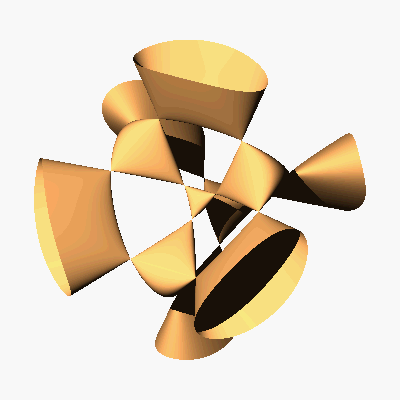

|
Thom polynomials are designed to solve enumerative problems. The theory of Thom
polynomials
of complex singularities is well established. A theorem of Borel and Haeiger allows
us to translate the complex results to mod 2 results for real singularities, which
leads to solutions
for mod 2 enumerative problems. The theory of integer valued Thom polynomials of real
singularities is not very well understood. I will talk about some important examples
calculated
jointly with András Szenes. Al sample result is
tp(A4(2l-1)) = (p_l)^2
+ 3\sum_{i=1}^l 4^{i-1}p_{l-i}p_{l+i}
where p_i denote the Pontryagin classes and A4(2l .. 1) is the Thom-Boardman class
\Sigma^{1;1;1;1} in
relative codimension 2l-1. Notice the similarity with Ronga's formula for the Thom
polynomial
of the cusp (or A2 or \Sigma^{1;1} singularities in the complex case.
These results lead to non-trivial lower bounds for enumerative problems.
Another direction to find new results is to stay in the mod 2 world but enhance the
Thom
polynomials. In the complex case the Segre-Schwartz-MacPherson Thom polynomials were
introduced by Ohmoto Toru. In a joint work with Ákos Matszangosz we introduced the
real
version, the Segre-Stiefel-Whitney Thom polynomials. These allow us for example to
find
obstructionsand geometric meaning for them for the existence of Morin or fold maps of
real
projective spaces into a Euclidean space.
As an example of these geometric interpretations of obstructions we can calculate the
modulo
2 Euler class of certain degeneracy loci of generic smooth maps.
Joint work with András Szenes and Ákos Matszangosz. |